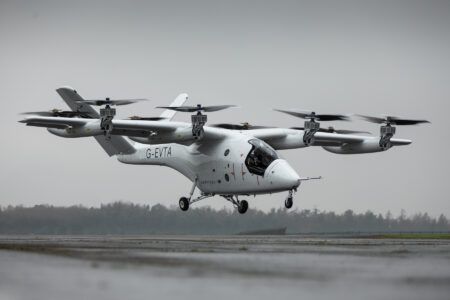The US Defense Advanced Research Projects Agency (DARPA) and the Air Force Research Laboratory (AFRL) have successfully tested semi-autonomous flight control and targeting software developed by BAE Systems for fighter jets.
The onboard Distributed Battle Management (DBM) software provides timely and relevant information to operators and pilots when communication is difficult, so they can better manage and control air-to-air and air-to-ground combat in contested environments.
Currently, combat missions are coordinated by operators and pilots using a combination of manned and unmanned vehicles, sensors, and electronic warfare systems that rely on satellite communications and tactical data links. When those networks are interrupted, it leaves fighter jets unable to effectively communicate and avoid threats during their missions.
The 11-day flight test conducted by DARPA and AFRL included seven live flights that were a mix of live and simulation runs and simulation-only runs. The tests were the first conducted for the DBM software.
The test demonstrated the capabilities of the two parts of the DBM platform- the Anti-Access Real-time Mission Management System (ARMS) and the Contested Network Environment Situational Understanding System (CONSENSUS).
DBM software enhances mission effectiveness by providing warfighters with shared situational understanding; interchangeable roles; coordinated objectives for teams of manned and unmanned aerial vehicles in communications denied environments; and compressed, prioritized data transfer when communications are available.
ARMS is a planning and control software that provides near real-time mission capabilities so fighter jets can engage in air-to-air and air-to-ground targets and search airspace.
CONSENSUS is situational understanding software that provides pilots and operators with weapon targeting guidance and mission awareness through a common operational picture by fusing raw data from multiple platforms and sensors.
David Hiltz, director of the Planning and Control Technologies Directorate at BAE Systems, said, “The lack of automated decision aids severely hinders operators and pilots from making critical decisions with limited communications so they can adapt to combat scenarios.
“Our DBM software delivers these automated decision aids that provide mission execution options and the ability to maintain a consistent mission representation and status across all platforms, which allows warfighters to make better, faster combat decisions to ensure mission safety and completion.”
BAE Systems’s DBM software capabilities build on the company’s autonomous technology innovations, including real-time mission management and multi-intelligence data fusion.
February 16, 2016





